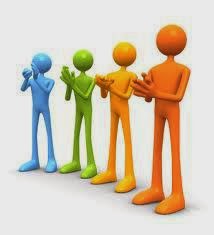I learnt this model of analyzing social behavior, a few months ago while taking a MOOC. The first thing it makes you understand is that 'Macrobehavior' is not necessarily the summation of 'Micromotives'.
It helps understand this concept with the simple illustration of how individual behavior is influenced in any social setting. This could be as simple as audience' reaction at the end of a stage show(event), which may or may not be a standing ovation.
The basic model has few assumptions:
1. Event's quality is 'Q'.
2. Each person receives a signal, 'S' = Q + 'e'(error, different for each person)
3. One stands if 'S' > 'Threshold' or more than X% of people stand.
To learn more: https://sites.google.com/site/standingovationmodel/
This means more and more people will stand if either the show quality is quite high or if the threshold is too low.
I just noticed the same live in action while waiting for a traffic signal to turn green. There were around 15 of us waiting at the signal at the time it turned red. Since the waiting time was approximately a minute, a guy, tired of waiting(with no vehicles on the opposite side), simply ignored it after waiting for approx. 20 seconds. Followed him, a few more people and before it could turn yellow, there were only around 7-8 people left. And the process just did not stop, people continued following others and around 10 seconds before it turns green, there were only two of us. I would confess that I too did break the signal only a second or two before it was time for the signal to turn green. I guess, I ended up doing that unknowingly(as far as I remember now, the first time ever) because everyone else did (that's no excuse for sure :-( ).
Have you encountered any such incidents that establishes Macrobehavior NE Micromotives? It would be interesting to learn them. Thank you!

No comments:
Post a Comment